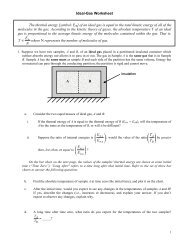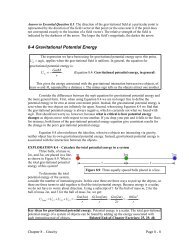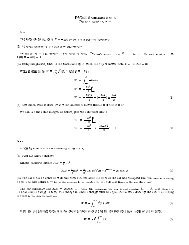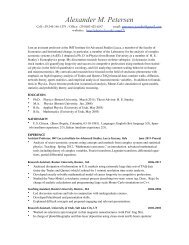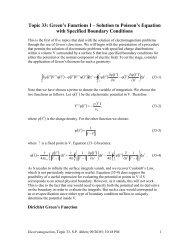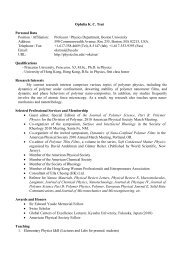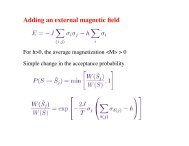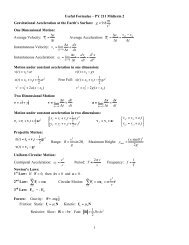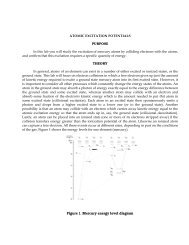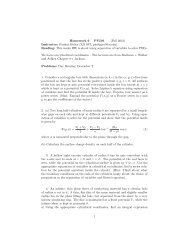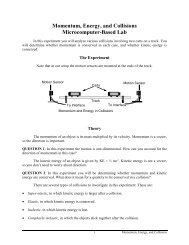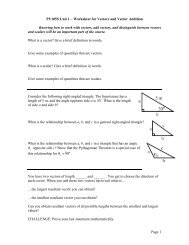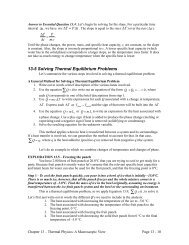Crystal Structure 1 3.1 Some Basic Concepts of Crystal Structure ...
Crystal Structure 1 3.1 Some Basic Concepts of Crystal Structure ...
Crystal Structure 1 3.1 Some Basic Concepts of Crystal Structure ...
You also want an ePaper? Increase the reach of your titles
YUMPU automatically turns print PDFs into web optimized ePapers that Google loves.
<strong>Crystal</strong> <strong>Structure</strong><br />
<strong>Basic</strong> <strong>Concepts</strong><br />
<strong>Crystal</strong> <strong>Structure</strong><br />
In the above, we have discussed the concept <strong>of</strong> crystal lattice. To complete a crystal<br />
structure, one needs to attach the basis (a fixed group <strong>of</strong> atoms) to each lattice point, i.e.,<br />
Bravais Lattice + Basis = <strong>Crystal</strong> <strong>Structure</strong><br />
Fig. 3.8 (From Kittel) The crystal<br />
structure is formed by the addition <strong>of</strong> the<br />
basis (b) to the lattice points <strong>of</strong> the lattice<br />
(a). By looking at (c), you can recognize<br />
the basis and then you can abstract the<br />
space lattice. It does not matter where the<br />
basis is put in relation to a lattice point.<br />
<strong>Some</strong> examples:<br />
(1) Diamond structure<br />
Fig. 3.9 (From A&M) Conventional cubic cell <strong>of</strong><br />
the diamond lattice. This structure consists <strong>of</strong> two<br />
interpenetrating fcc lattices, displaced along the<br />
body diagonal <strong>of</strong> the cubic cell by ¼ the length <strong>of</strong><br />
the diagonal. It can be regarded as a fcc lattice<br />
with the two-point basis at (000) and 1/4(111).<br />
Note that the diamond structure is not a Bravais<br />
lattice.<br />
5



![arXiv:1303.7274v2 [physics.soc-ph] 27 Aug 2013 - Boston University ...](https://img.yumpu.com/51679664/1/190x245/arxiv13037274v2-physicssoc-ph-27-aug-2013-boston-university-.jpg?quality=85)
